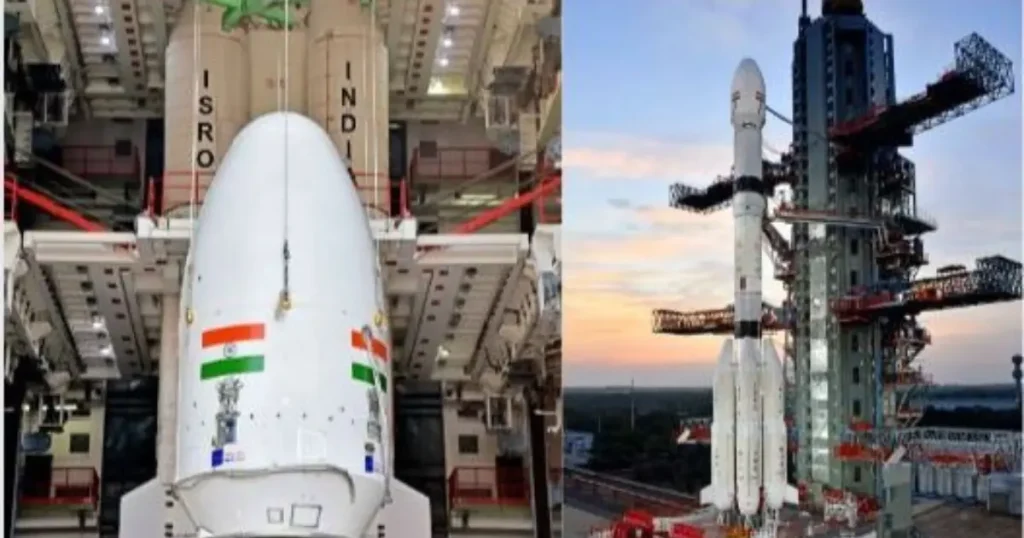
ISRO: The INSAT-3DS, boasting sophisticated payloads meticulously crafted to furnish precise and expeditious information regarding atmospheric conditions, stands as an avant-garde meteorological satellite. In succinct terms, it signifies the pinnacle of India’s third-generation satellites, following the triumphant deployment of its predecessors, INSAT-3D and INSAT-3DR, both instrumental in amplifying weather observation and analysis. Launched by the Indian Space Research Organisation (ISRO) from the Satish Dhawan Space Centre in Sriharikota, this endeavor unfolds on a Friday.
This mission’s primary objective revolves around fortifying India’s weather prediction prowess, a crucial endeavor amid the global turmoil wrought by climate change. The INSAT-3DS, an embodiment of cutting-edge meteorological technology, now orbits alongside its forerunners in geostationary splendor, its advanced payloads poised to deliver heightened precision and timely insights into atmospheric nuances.
The lineage of success began with INSAT-3D and continued with INSAT-3DR, the latter operational since September 2016, both leaving an indelible mark on weather observation and analysis. INSAT-3DS, the latest scion of this lineage, emerges equipped with payloads that transcend conventional capabilities, promising a new era of meteorological excellence.
Anticipated benefits encompass a transformative impact across sectors such as agriculture, aviation, and disaster management, facilitating enhanced preparedness for the challenges imposed by ever-changing weather patterns.
The launch, orchestrated through the GSLV-MkII rocket, unfolds in a meticulously choreographed dance, depositing the satellite in the geostationary transfer orbit, destined to ascend to a geostationary orbit. The satellite’s objectives are manifold and pivotal for environmental monitoring and safety. Its capabilities extend to monitoring Earth’s surface and conducting oceanic observations across various spectral channels, critical for nuanced meteorological analysis.
Read also: Digital Detox: Top Reasons You Should Unplug to Boost Your Mental Well-being
In this intricately woven tapestry of technological advancement, the INSAT-3DS heralds a new era, where each orbit and spectral channel contributes to an orchestra of environmental awareness. As it hovers in geostationary majesty, it symbolizes the fusion of scientific prowess and technological finesse, promising a future where meteorological insights are not just data points but harmonies in the symphony of Earth’s well-being.
ISRO Achieves Milestone
- Successful Launch: Emphasize the accomplishment of the launch, indicating that ISRO has effectively deployed the INSAT-3DS weather satellite into space.
- National Achievement: Highlight the significance of this achievement for India, showcasing the country’s capabilities in space technology and its commitment to advancing its space program.
- INSAT-3DS Weather Satellite: Provide information about the purpose and capabilities of the INSAT-3DS satellite, particularly its role in weather monitoring and related applications.
- ISRO’s Expertise: Acknowledge ISRO’s expertise in space exploration and satellite launches, showcasing its reputation as a reliable and successful space agency.
- Benefits for Weather Monitoring: Discuss how the INSAT-3DS satellite will contribute to improved weather monitoring, disaster management, and other applications that benefit society.
- International Collaboration (if applicable): If there are any international collaborations or partnerships involved in the project, mention them to highlight the global cooperation in space exploration.
- Future Implications: Briefly touch upon the potential impact of this successful launch on future space missions, advancements in satellite technology, and the broader goals of ISRO.
By focusing on these key elements, you can provide a comprehensive overview of the significance and impact of ISRO’s successful launch of the INSAT-3DS weather satellite.